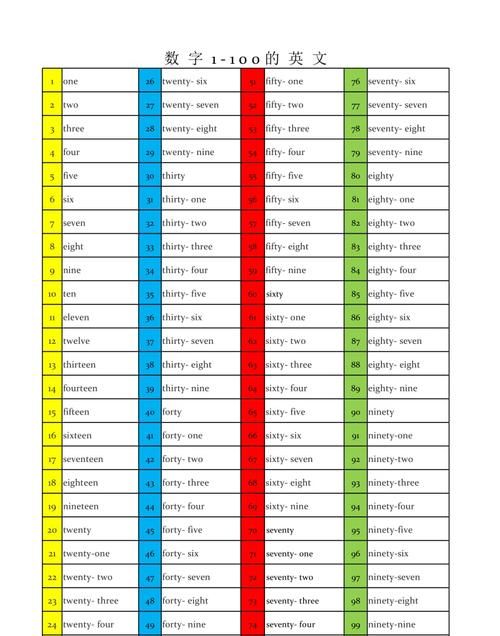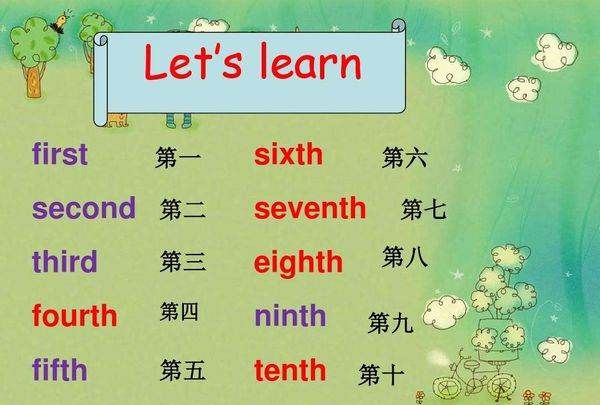本文目录
初中英语单词词性分类归纳表
英语单词词性分类介绍
英语单词的词性分为名词、动词、形容词等等,下面是我分享的此行介绍,希望能帮到大家!

词性的分类
词类又叫词性,英语单词根据其在句子中的功用,可以分成十个大类。
1 名词 noun n. student 学生
2 代词 pronoun pron. you 你
3 形容词 adjective adj. happy 高兴的
4 副词 adverb adv. quickly 迅速地
5 动词 verb v. cut 砍、割
6 数词 numeral num. three 三
7 冠词 article art. a 一个
8 介词 preposition prep. at 在...
9 连词 conjunction conj. and 和
10 感叹词 interjection interj. oh 哦
前六类叫实词,后四类叫虚词。
动词
动词根据其后是否带有宾语,可分为两类,分别是:及物动词(Transitive Verb)、不及物动词(Intransitive Verb),缩写形式分别为vt. 和vi.。
在英语中按动词后可否直接跟宾语,可以把动词分成两种:及物动词与不及物动词。 及物动词 vt. 字典里词后标有vi. 的就是不及物动词。不及物动词后不能直接跟有动作的对象(即宾语)。若要跟宾语,必须先在其后添加上某个介词,如to,of ,at后方可跟上宾语。 及物动词: 又称“他动词”。又称“外动词”。动词的一种。它所表示的动作常涉及动作者以外的事物,如“吃”、“穿”、“读”、“写”等。字典里词后标有vt. 的就是及物动词。及物动词后必须跟有动作的对象(即宾语),并且可直接跟宾语。
不及物动词:字典里词后标有vi. 的就是不及物动词。不及物动词后不能直接跟有动作的对象(即宾语)。若要跟宾语,必须先在其后添加上某个介词,如to,of ,at后方可跟上宾语。具体每个动词后究竟加什么介词就得联系动词短语了
系动词
1)状态系动词:用来表示主语状态,只有be一词,例如:He is a teacher.
2)持续系动词:用来表示主语继续或保持一种状况或态度,主要有keep, rest, remain, stay, lie, stand, 例如:He always kept silent at meeting.他开会时总保持沉默。
3)表像系动词:用来表示“看起来像”这一概念,主要有seem, appear, look, 例如:
He looks tired.他看起来很累。
4)感官系动词:感官系动词主要有feel, smell, sound, taste, 例如:
This kind of cloth feels very soft. This flower smells very sweet.
5)变化系动词:这些系动词表示主语变成什么样,变化系动词有become, grow, turn, fall, get, go, come, run. 例如:He became mad after that.自那之后,他疯了。
6)终止系动词:表示主语已终止动作,主要有prove, turn out, 表达“证实”,“变成”之意,例如:The search proved difficult.搜查证实很难。
形容词
形容词(adjective),简称adj.或a.,很多语言中均有的主要词类中的一种。主要用来修饰名词的词,表示事物的特征。形容词用来修饰名词或代词,表示人或事物的性质、状态,和特征的程度好坏,与否。
形容词作定语修饰名词时,要放在名词的前边。但是如果形容词修饰以-thing为字尾的词语时,要放在这些词之后,例如:
something nice
以-ly结尾的形容词
1)friendly,deadly,lovely,lonely,likely,lively,ugly,brotherly,仍为形容词。
2)有些以-ly 结尾既为形容词,也为副词。
daily,weekly,monthly,yearly,early
The Times is a daily paper. The Times is published daily.
用形容词表示类别和整体
某些形容词加上定冠词可以泛指一类人,与谓语动词的复数连接。如:the dead,the living,the rich,the poor,the blind,the hungry
多个形容词修饰名词的顺序
限定词--数词--描绘词--(大小,长短,形状,新旧,颜色) --出处--材料性质,类别--名词
a small round table;a tall gray building;a dirty old brown shirt;a famous German medical school
副词
副词(adverb,简写为adv)是一种用来修饰动词、形容词、全句的词,说明时间、地点、程度、方式等概念的词。副词是一种半虚半实的词。副词可分为:地点副词、方式副词、程度副词、疑问副词和连接副词。
副词的排列顺序:
时间,地点副词,小单位的在前,大单位在后。
注意:副词enough要放在形容词的后面,形容词enough放在名词前后都可。
I don’t know him well enough.
There is enough food for everyone to eat. There is food enough for everyone to eat.
兼有两种形式的副词
1) close与closely
close意思是“近”; closely 意思是“仔细地”
He is sitting close to me. Watch him closely.
2)late 与lately
late意思是“晚”; lately 意思是“最近”
You have come too late. What have you been doing lately?
形容词与副词的比较级
冠词
冠词是印欧语系和闪含语系的诸语中,位于名词或名词词组之前或之后,在句子里主要是对名词起限定作用的词。冠词是一种虚词。
不定冠词a (an)与数词one 同源,是“一个”的意思。
定冠词的用法
定冠词the与指示代词this,that同源,有“那(这)个”的意思。
1)特指双方都明白的人或物:Take the medicine.把药吃了。
2)上文提到过的人或事: He bought a house. I’ve been to the house.
3)指世上独一物二的事物:the sun, the sky, the moon, the earth
4)单数名词连用表示一类事物,如:the dollar 美元;
the fox 狐狸;或与形容词或分词连用,表示一类人:the rich 富人; the living 生者。
5)用在序数词和形容词最高级,及形容词only, very, same等前面:
Where do you live? I live on the second floor.你住在哪?我住在二层。
6)与复数名词连用,指整个群体:
They are the teachers of this school.指全体教师)
They are teachers of this school.(指部分教师)
7)表示所有,相当于物主代词,用在表示身体部位的名词前:
She caught me by the arm..她抓住了我的手臂。
8)用在某些由普通名词构成的国家名称、机关团体、阶级、等专有名词前:
the People‘s Republic of China中华人民共和国
9)用在表示乐器的名词之前:She plays the piano.她会弹钢琴。
10) 用在姓氏的复数名词之前,表示一家人:the Greens格林一家人 (或格林夫妇)
11) 用在惯用语中:
in the day, in the morning (afternoon,evening),the day after tomorrow
the day before yesterday, the next morning, in the sky (water,field,country)
in the dark, in the rain, in the distance, in the middle (of),in the end,
on the whole, by the way, go to the theatre
零冠词的用法
冠词与形容词+名词结构
1) 两个形容词都有冠词,表示两个不同东西。
He raises a black and a white cat.他养了一只黑猫和一只白猫。
2) 如后一个形容词无冠词,则指一物。
He raises a black and white cat.他养了一只花猫。
冠词位置
1) 不定冠词位置 不定冠词常位于名词或名词修饰语前。注意:
a. 位于下列形容词之后: such,what,many,half,
such an animal; Many a man
b. 当名词前的形容词被副词as, so, too, how, however, enough修饰时,不定冠词应放在形容词之后:It is as pleasant a day as I have ever spent.
c. quite,rather与单数名词连用,冠词放在其后。
但当rather,quite 前仍有形容词,不定冠词放其前后均可。如:quite a lot
d. 在as,though 引导的让步状语从句中,当标语为形容词修饰的名词时,不定冠词放形容词后: Brave a man though he is,he trembles at the sight of snakes.
当名词被比较级形容词修饰时,不定冠词通常置于比较级形容词之后。
2) 定冠词位置 定冠词通常位于名词或名词修饰语前,但放在all, both,double,half,twice,three times等词之后,名词之前。
All the students in the class went out.班里的所有学生都出去了。
代词
代词pronoun简称pron是代替名词的一种词类。大多数代词具有名词和形容词的功能。英语中的代词,按其意义、特征及在句中的'作用分为:人称代词、物主代词、指示代词、反身代词、相互代词、疑问代词、关系代词、连接代词和不定代词九种
人称代词的用法:
I saw her with them, at least, I thought it was her.
我看到她和他们在一起,至少我认为是她。(her做宾语,them做介词宾语,her作主补)
a. -- Who broke the vase?--谁打碎了花瓶?
b. -- Me.--我。(me作主语补语= It’s me.)
并列人称代词的排列顺序
1) 单数人称代词并列作主语时,其顺序为:
第二人称 -> 第三人称 -> 第一人称you -> he/she; it -> I
2) 复数人称代词作主语时,其顺序为:
第一人称 -> 第二人称 -> 第三人称we->you ->They
反身代词
1)
指示代词
指示代词分单数(this / that)和复数(these / those)两种形式,既可作限定词又可做代词,
疑问代词
指人: who, whom, whose指物: what既可指人又可指物: which
代词比较辩异one, that和it
one表示泛指,that和it 表示特指。that与所指名词为同类,但不是同一个,而it 与所指名词为同一个。
I can‘t find my hat. I think I must buy one.(不定)
The hat you bought is bigger than that I bought.(同类但不同个)
I can’t find my hat. I don‘ t know where I put it.( 同一物)
名词的格
在英语中有些名词可以加“‘s”来表示所有关系,带这种词尾的名词形式称为该名词的所有格,如:a teacher’s book。名词所有格的规则如下:
1) 单数名词词尾加“‘s”,复数名词词尾没有s,也要加“’s”,如the boy‘s bag 男孩的书包,men’s room 男厕所。
2) 若名词已有复数词尾-s ,只加“‘”,如:the workers’ struggle工人的斗争。
3) 凡不能加“‘s”的名词,都可以用“名词+of +名词”的结构来表示所有关系,如:the title of the song 歌的名字。
数词
表示数目多少的数词叫基数词;表示顺序的数词叫序数词。
数词的用法
1)倍数表示法
a. 主语+谓语+倍数(或分数)+ as + adj. + as
I have three times as many as you.我有你三倍那么多。
b. 主语+谓语+倍数(分数)+ the size (amount,length…) of…
The earth is 49 times the size of the moon.地球是月球的49倍。
c. 主语+谓语+倍数(分数)+ 形容词(副词)比较级+ than…
The grain output is 8 percent higher this year than that of last year.
d. 还可以用by+倍数,表示增加多少倍
The production of grain has been increased by four times this year.
2)分数表示法
构成:基数词代表分子,序数词代表分母。分子大于1时,分子的序数词用单数,分母序数词用复数:1/3 one-third ; 3/37 three and three-sevenths
连词
连词是一种虚词, 它不能独立担任句子成分而只起连接词与词,短语与短语以及句与句的作用。连词主要可分为两类:并列连词和从属连词。并列连词用来连接平行的词、词组和分句。如:and, but, or, nor, so, therefore, yet, however, for, hence, as well as, both…and, not only…but also, either…or, neither…nor, (and)then等等。
not…but… 意思为“不是……而是……” not 和but 后面的用词要遵循一致原则。
They were not the bones of an animal, but (the bones) of a human being.
比较so和 such
其规律由so与such的不同词性决定。such 是形容词,修饰名词或名词词组,so是副词,只能修饰形容词或副词。so 还可与表示数量的形容词many,few,much, little连用,形成固定搭配。
so + adj. such + a(n) + n.
so + adj. + a(n) + n. such + n. (pl.)
so + adj. + n. (pl.) such +n. (pl.)
so + adj. + n. [不可数] such +n. [不可数]
so foolish ;such a fool so nice a flower;such a nice flower
so many/ few flowers;such nice flowers so much/little money;such rapid progress
so many people ;such a lot of people
介词
介词是一种用来表示词与词、词与句之间的关系的虚词,在句中不能单独作句子成分。介词后面一般有名词代词或相当于名词的其他词类,短语或从句作它的宾语。介词和它的宾语构成介词词组,在句中作状语,表语,补语或介词宾语。介词可以分为时间介词、地点介词、方式介词、原因介词和其他介词,
概念:
1)介词(是prepositions,简称prep),又称前置词,是英语中最活跃的词类之一,连接主语和表语。特别是一些常用介词的搭配力特别强,可以用来表示各种不同的意思。英语里大部分习语都是由介词和其他词构成的。介词在句中一般不重读。在定语从句“介词+who/which”的结构中,不能用that 代替who/which。She is a good student from who we should learn.
2)介词的种类 介词分简单介词和短语介词两种,简单介词及单个介词,如 in ,under ,on ,for ,after ,等,短语介词指多个单词构成的介词,如in front of ,out of ,instead of ,far from ,apart from 等。
;英语词性的简称与全称以及音标
1,及物动词: 字典里词后标有vt. 的就是及物动词。及物动词后一般必须跟有动作的对象(即宾语)。必须加宾语意思才完整的动词,就是及物动词。
2,不及物动词: 不及物动词是不需要受词的动词。字典里词后标有vi. 的就是不及物动词。不及物动词后不能直接跟有动作的对象(即宾语)。若要跟宾语,必须先在其后添加上某个介词,如to,of ,at后方可跟上宾语。
3,名词,Nouns (n.) 表示人或事物的'名称 box, pen,tree,apple
4,代词,Pronouns (pron.) 代替名词、数词、形容词We, this, them,myself
5,形容词, Adjectives(adj.) 用来修饰名词,表示人或事物的特征 good, sad, high, short
6,数词,Numerals(num.) 表示数目或顺序 one,two, first
7,动词,Verb (v.) 表示动作或状态 Jump,sing,visit
8,副词,Adverbs(adv.) 修饰动、形、副等词,表示动作特征 there,widely,suddenly
9,冠词,Articles (art.) 用在名词前,帮助说明名词所指的范围 a, an, the
10,介词,Prepositions (prep.) 用在名词或代词前,说明它与别的词的关系 in,on,down,up
11,连词,Conjunctions (conj.) 用来连接词、词组、从句或句子的词,例如 和、但是、象及 因为 if,because,but
12,感叹词, Interjections (int.) 表示说话时的语气或感情 oh,hello,hi,yeah
拓展阅读: 可以演变出多种复杂的句子的五个基本句式:
S十V主谓结构
S十V十P主系表结构
S十V十O主谓宾结构
S十V十O1十O2 主谓双宾结构
S十V十O十C主谓宾补结构
(说明:S=主语;V=谓语;P=表语;O=宾语;O1=间接宾语;O2=直接宾语;C=补语)
1.S十V
在此句式中,V是不及物动词,又叫自动词(vi.)。例如:
He runs quickly.他跑得快。
They listened carefully.他们听得很仔细。
He suffered from cold and hunger.他挨冻受饿。
China belongs to the third world country.中国属于第三世界国家。
The gas has given out.煤气用完了。
My ink has run out.我的钢笔水用完了。
2.S十V十P
在此句式中,V是系动词(link v.),常见的系动词有:look,seem,appear,sound,feel,taste,smell,grow,get,fall ill/asleep,stand/sit still,become,turn等。例如:
He is older than he looks.他比看上去要老。
He seen interested in the book.他似乎对这本书感兴趣。
The story sounds interesting.这个故事听起来有趣。
The desk feels hard.书桌摸起来很硬。
The cake tastes nice.饼尝起来很香。
The flowers smell sweet and nice.花闻起来香甜。
You have grown taller than before.你长得比以前高了。
He has suddenly fallen ill.他突然病倒了。
He stood quite still.他静静地站看。
He becomes a teacher when he grew up.他长大后当了教师。
He could never turn traitor to his country.他永远不会背叛他的祖国。
3.S十V十O
在此句式中,V是及物动词(vt.),因此有宾语。例如:
I saw a film yesterday.我昨天看了一部电影。
Have you read the story?你读过这个故事吗?
They found their home easily.他们很容易找到他们的家。
They built a house last year.他们去年建了一所房子。
They‘ve put up a factory in the village.他们在村里建了一座工厂。
They have taken good care of the children.这些孩子他们照看得很好。
You should look after your children well.你应该好好照看你的孩子。
4.S十V十O1十O2
在此句式中,V是带有双宾语的及物动词。常见的须带双宾语的动词有give,ask,bring,offer,send,pay,lend,show,tell,buy,get;rob,warn等。例如:
He gave me a book/a book to me.他给我一本书。
He brought me a pen/a pen to me.他带给我一枝钢笔。
He offered me his seat/his seat to me.他把座位让给我。
注意下边动词改写后介词的变化:
Mother bought me a book/a book for me.妈妈给我买了一本书。
He got me a chair/a chair for me.他给我弄了一把椅子。
Please do me a favor/a favor for me.请帮我一下。
He asked me a question/a question of me.他问我个问题。
注意,下边动词只有一种说法:
They robbed the old man of his money.他们抢了老人的钱。
He’s warned me of the danger.他警告我注意危险。
The doctor has cured him of his disease.医生治好了他的病。
We must rid the house of the rats.我们必须赶走屋里的老鼠。
They deprived him of his right to speak.他们剥夺了他说话的权利。
5.S十V十O十C
在此句式中,V是有宾语补足语的及物动词。常带宾语补足语的词有形容词、副词、介词短语、名词、不定式、现在分词、过去分词,请看下面的例子。
They made the girl angry.他们使这个女孩生气了。
They found her happy that day.他们发现那天她很高兴。
I found him out.我发现他出去了。
I saw him in.我见他在家。
They saw a foot mark in the sand.他们发现沙地上有脚印。
They named the boy Charlie.他们给这个男孩起名为查理。
I saw him come in and go out.我见他进来又出去。
They felt the car moving fast.他们感到汽车行驶得很快。
I heard the glass broken just now.我刚才听到玻璃碎了。

英语词性的简称与全称以及音标
英语词性缩写及全称介绍
单词表中的英语单词后往往有的adj.、adv.等就是英语单词的词性缩写,下面是我为大家准备的英语单词词性缩写及介绍,希望能帮到大家!

1,及物动词: 字典里词后标有vt. 的就是及物动词。及物动词后一般必须跟有动作的对象(即宾语)。必须加宾语意思才完整的动词,就是及物动词。
2,不及物动词: 不及物动词是不需要受词的动词。字典里词后标有vi. 的就是不及物动词。不及物动词后不能直接跟有动作的.对象(即宾语)。若要跟宾语,必须先在其后添加上某个介词,如to,of ,at后方可跟上宾语。
3,名词,Nouns (n.) 表示人或事物的名称 box, pen,tree,apple
4,代词,Pronouns (pron.) 代替名词、数词、形容词We, this, them,myself
5,形容词, Adjectives(adj.) 用来修饰名词,表示人或事物的特征 good, sad, high, short
6,数词,Numerals(num.) 表示数目或顺序 one,two, first
7,动词,Verb (v.) 表示动作或状态 Jump,sing,visit
8,副词,Adverbs(adv.) 修饰动、形、副等词,表示动作特征 there,widely,suddenly
9,冠词,Articles (art.) 用在名词前,帮助说明名词所指的范围 a, an, the
10,介词,Prepositions (prep.) 用在名词或代词前,说明它与别的词的关系 in,on,down,up
11,连词,Conjunctions (conj.) 用来连接词、词组、从句或句子的词,例如 和、但是、象及 因为 if,because,but
12,感叹词, Interjections (int.) 表示说话时的语气或感情 oh,hello,hi,yeah
拓展阅读: 可以演变出多种复杂的句子的五个基本句式:
S十V主谓结构
S十V十P主系表结构
S十V十O主谓宾结构
S十V十O1十O2 主谓双宾结构
S十V十O十C主谓宾补结构
(说明:S=主语;V=谓语;P=表语;O=宾语;O1=间接宾语;O2=直接宾语;C=补语)
1.S十V
在此句式中,V是不及物动词,又叫自动词(vi.)。例如:
He runs quickly.他跑得快。
They listened carefully.他们听得很仔细。
He suffered from cold and hunger.他挨冻受饿。
China belongs to the third world country.中国属于第三世界国家。
The gas has given out.煤气用完了。
My ink has run out.我的钢笔水用完了。
2.S十V十P
在此句式中,V是系动词(link v.),常见的系动词有:look,seem,appear,sound,feel,taste,smell,grow,get,fall ill/asleep,stand/sit still,become,turn等。例如:
He is older than he looks.他比看上去要老。
He seen interested in the book.他似乎对这本书感兴趣。
The story sounds interesting.这个故事听起来有趣。
The desk feels hard.书桌摸起来很硬。
The cake tastes nice.饼尝起来很香。
The flowers smell sweet and nice.花闻起来香甜。
You have grown taller than before.你长得比以前高了。
He has suddenly fallen ill.他突然病倒了。
He stood quite still.他静静地站看。
He becomes a teacher when he grew up.他长大后当了教师。
He could never turn traitor to his country.他永远不会背叛他的祖国。
3.S十V十O
在此句式中,V是及物动词(vt.),因此有宾语。例如:
I saw a film yesterday.我昨天看了一部电影。
Have you read the story?你读过这个故事吗?
They found their home easily.他们很容易找到他们的家。
They built a house last year.他们去年建了一所房子。
They‘ve put up a factory in the village.他们在村里建了一座工厂。
They have taken good care of the children.这些孩子他们照看得很好。
You should look after your children well.你应该好好照看你的孩子。
4.S十V十O1十O2
在此句式中,V是带有双宾语的及物动词。常见的须带双宾语的动词有give,ask,bring,offer,send,pay,lend,show,tell,buy,get;rob,warn等。例如:
He gave me a book/a book to me.他给我一本书。
He brought me a pen/a pen to me.他带给我一枝钢笔。
He offered me his seat/his seat to me.他把座位让给我。
注意下边动词改写后介词的变化:
Mother bought me a book/a book for me.妈妈给我买了一本书。
He got me a chair/a chair for me.他给我弄了一把椅子。
Please do me a favor/a favor for me.请帮我一下。
He asked me a question/a question of me.他问我个问题。
注意,下边动词只有一种说法:
They robbed the old man of his money.他们抢了老人的钱。
He’s warned me of the danger.他警告我注意危险。
The doctor has cured him of his disease.医生治好了他的病。
We must rid the house of the rats.我们必须赶走屋里的老鼠。
They deprived him of his right to speak.他们剥夺了他说话的权利。
5.S十V十O十C
在此句式中,V是有宾语补足语的及物动词。常带宾语补足语的词有形容词、副词、介词短语、名词、不定式、现在分词、过去分词,请看下面的例子。
They made the girl angry.他们使这个女孩生气了。
They found her happy that day.他们发现那天她很高兴。
I found him out.我发现他出去了。
I saw him in.我见他在家。
They saw a foot mark in the sand.他们发现沙地上有脚印。
They named the boy Charlie.他们给这个男孩起名为查理。
I saw him come in and go out.我见他进来又出去。
They felt the car moving fast.他们感到汽车行驶得很快。
I heard the glass broken just now.我刚才听到玻璃碎了。
;第22届世界杯足球赛
第21:twenty-first /21st;
第22:twenty-second/22nd;
第23:twenty-third/23rd;
第24:twenty-fourth/24th;
第25:twenty-fifth/25th;
第26:twenty-sixth/26th;
第27:twenty-seventh/27th;
第28:twenty-eighth/28th;
第29:twenty-ninth/29th;
第30:thirtieth/30th;
第31:thirty-first/31th。

扩展资料
英语上数词分为两大类:基数词和序数词。
基数词的定义为:描述事物数量的多少的数词称为基数词。
序数词是数词的一种,主要在英语语法中讲到,在汉语中表示为“第几”。此外,在生日中,描述你出生的日期时,也会用到序数词。
基数词变序数词记忆口诀:
基变序,有规律,词尾加上“th”。
一,二,三(first、second、third)特殊记;
从4开始上th;5变ve改f(fifth),8去t(eighth),9减e(ninth);
几十尾巴ty变tie,后面跟上th(twentieth);
几十几,头不变,尾巴变,中间记得加个杠(twenty-fourth);
遇到特殊要除外(twenty-first);
以上就是关于数词的英文名 ,初中英语单词词性分类归纳表的全部内容,以及数词的英文名 的相关内容,希望能够帮到您。

